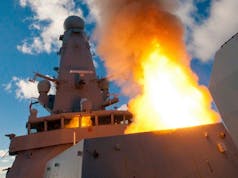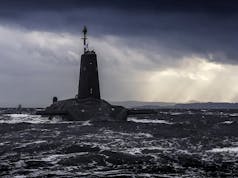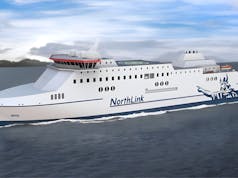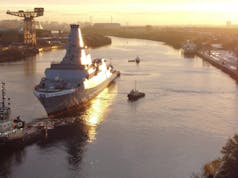A recent tweet from NATO Maritime Command highlighted a notable logistical operation: the Norwegian support ship HNOMS Maud, the flagship of Standing NATO Maritime Group 1 (SNMG1), refuelled the Royal Navy’s HMS Prince of Wales.
The operation allowed sailors to witness the aircraft carrier’s formidable air capabilities, including the F-35 jets it can deploy.
Today HNOMS Maud, #SNMG1s flag ship, replenished the UK’s HMS Prince of Wales with fuel. This was a rare opportunity for these Sailors to see the might and air power this ship is capable of delivering in the form of F35’s. #WeAreNATO pic.twitter.com/hdmWNgBx6R
— NATO Maritime Command (@NATO_MARCOM) October 9, 2024
In this replenishment at sea, HNOMS Maud provided fuel to the UK’s aircraft carrier while operating under NATO’s coordinated maritime command structure. Such exercises demonstrate the alliance’s logistical readiness and the ability of member nations to support each other during operations.
The collaboration also serves as a reminder of NATO’s commitment to maintaining a strong and cohesive maritime presence.
Exercise Strike Warrior is a major naval training event held by the Royal Navy, designed to enhance combat readiness and strengthen interoperability among allied forces. Taking place off the coast of Scotland, the exercise involves a wide array of naval assets, including surface ships, submarines, and air units, such as the UK Carrier Strike Group (CSG).
HMS Prince of Wales, one of the Royal Navy’s Queen Elizabeth-class aircraft carriers, plays a central role, alongside other vessels like HMS Iron Duke. The training scenarios during Strike Warrior include simulated air and missile attacks, anti-submarine warfare, and surface combat exercises, providing a rigorous test of the fleet’s capabilities.
The exercise also serves as a crucial preparation stage for future deployments, ensuring that the Royal Navy and its allies remain ready to respond to global threats.
It brings together forces from NATO allies and partner nations, fostering coordination and tactical skill development among participants. By simulating high-intensity combat operations, Strike Warrior aims to ensure that participating units, including aircraft, frigates, and destroyers, are well-prepared to meet the challenges of modern naval warfare. This focus on joint operations strengthens the Royal Navy’s ability to operate alongside allied forces in real-world scenarios, contributing to global maritime security and stability.














That because ours are on strike or old and past it and laid up? with no new ones ready yet.
Our tankers are in ok nick its because of the strike and lack of manpower
Lack of crew is a bit sad, RFA/Navy is under manned hopefully that will get fixed.
Not sure about the RN, but given the pay hasn’t moved up in ages for the RFA and the treaurey are still dragging their feet, I know an offer has made but was refused because of how bad it is. But because of the manning crisis they have laid up fort Victoria.
As with most things if you want good crew/staff you need to pay them. Its about retention which sadly our Armed Forces does not do well at due to money mainly.
Ayup you are right there but also there is a great deal of dissatisfaction as well with the way things are run. Also need to factor in as well we have a great many senior tickets think senior officer for the RN but with merchant navy qualifications who are aging out or leaving due to better offers in the comercial sector from both things like tankers and yatchs, RFA went from being seen as a career to a stepping stone to a lot of people as well because of the way the office messes people around.
Sadly a lot of the Armed forces are seen the same way, some deep issue problems and not just the poor pay.
Are RFA salaries paid from the MoD budget like the RN?
Now, a Q.E. escorted by a T45 and a Norwegian T26 would be something…
A Norwegian order for the T26s first… would also be something! 😆
Absolutely. I don’t know where we are with this at the moment. At the speed we’re moving at, if it mean’t hiving off one of our second batch maybe it would be worth it ?
Is ‘haead’ Norwegian 😉
The American Carriers have been refuelled by British tankers, it is nothing new to have replenishment at sea completed by a NATO ally.
Question when ships or planes get refuelled by allies? Who pays? Or is it just you need it, we got it , come get some?
PDQ machine gets sent over on the zip wire…
Ohh nooo CARD DECLINED.
Questions. How is Norwegian Maud manned in terms of its personnel? Is it buy their RFA equivalent or are they actual Navy personnel? Either way do we have an idea on their pay levels in comparison to the RFA? Is there a benchmark model there or even with other allies? Is anyone high up tackling this issue? Are there going to be any RFA vessels in the CSG 2025?
What happen to all the new Korean Tides ???
Blimey, according to Wiki, Tiderace has been paid off already.
Embarassing.